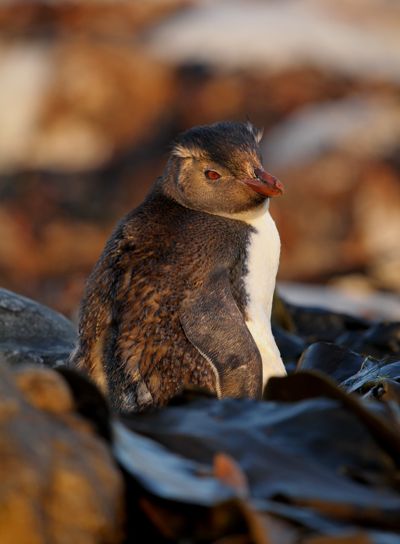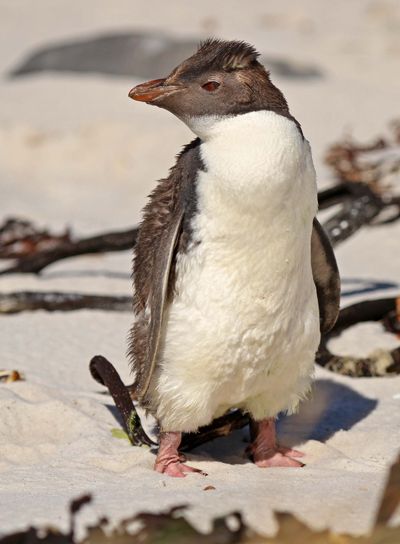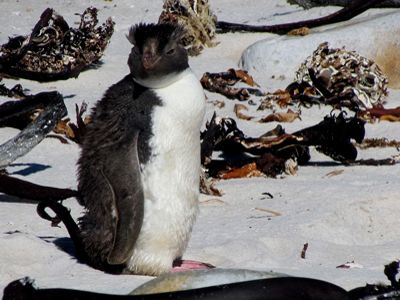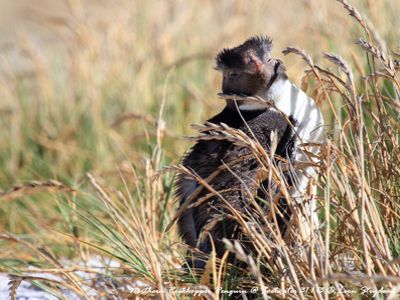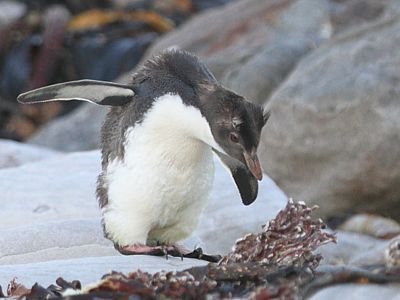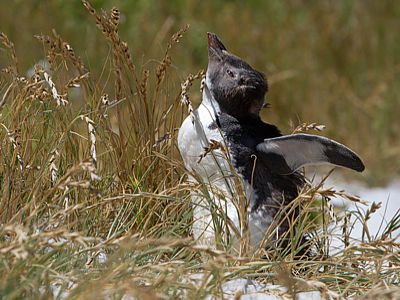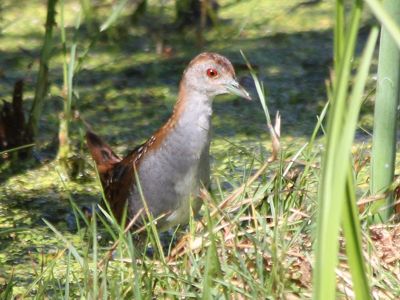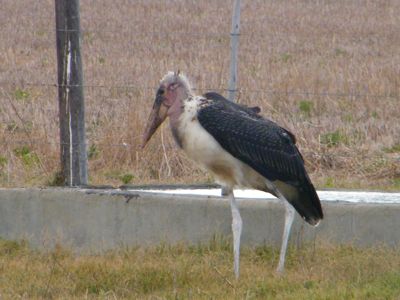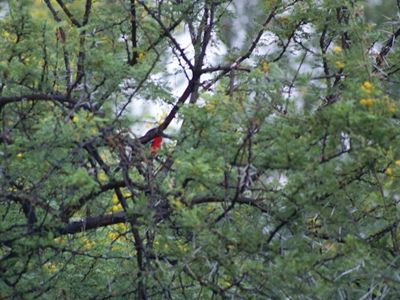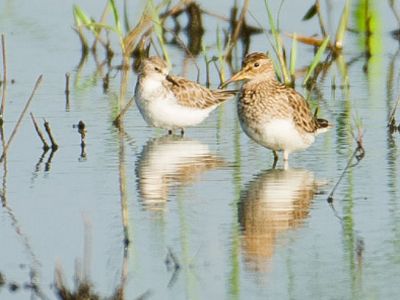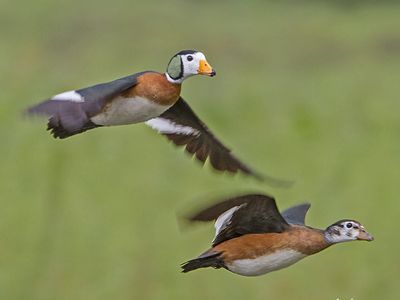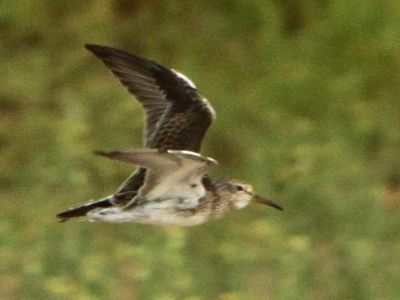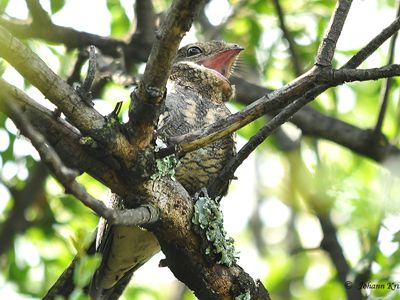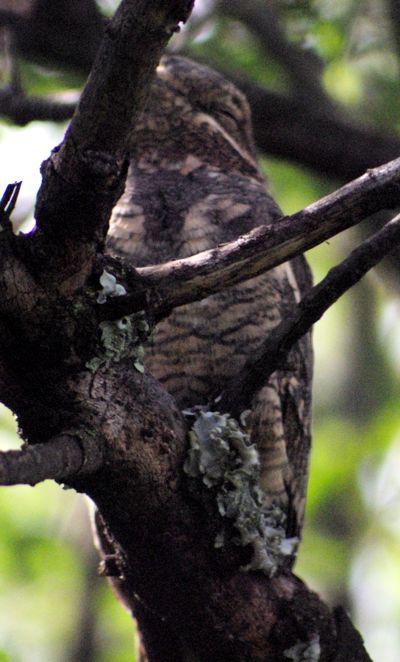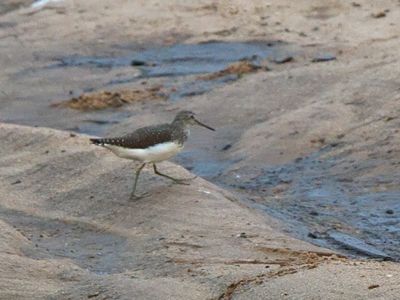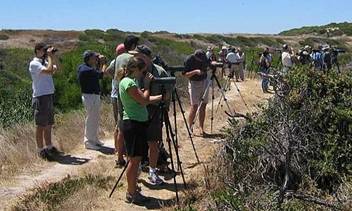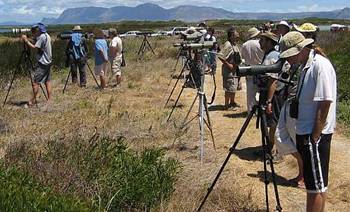SA Rare Bird News Report - 31 January 2013
Trevor Hardaker
| ||
| ||
This is the Southern African Rare Bird News Report issued at 20h15 on Thursday, 31 January 2013. Information has been gleaned from various websites, email groups as well as from individual observers who have passed on their sightings. This report cannot be taken as being totally comprehensive as it is based only on information made available at the time of writing. All bird sightings reported here are reported in good faith based on information as provided by the observers. Any inaccuracies are totally unintentional and the writer cannot be held liable for these. For those who may have only joined the group recently and are interested in finding out what has been seen in the past, previous reports can be viewed at http://groups.google.co.za/group/sa-rarebirdnews | ||
|
| |
Starting in the Western Cape, there can be absolutely no doubt as to what exactly the highlight of the last couple of days has been! The discovery late yesterday of a NORTHERN ROCKHOPPER PENGUIN along the beach at Soetwater Resort set the local birding world abuzz when news was released last night. The bird immediately drew attention and, since early this morning, there has been a steady stream of twitchers in to see the bird. The first Gautengers arrived on site mid morning and immediately connected with it whilst birders also drove in, some from as far afield as the Garden Route, and were on to the bird before lunch time. There are still loads on their way and tomorrow and the weekend should see birders from the Eastern Cape, Kwazulu Natal and more from Gauteng arriving as well to hopefully add this bird to their lists.
These birds breed on the Tristan Archipelago (Tristan, Inaccessible and Gough) and, although there are a number of records of them as vagrants here in SA in the past, none of them have really ever been twitchable for a number of reasons, hence this bird being so popular. Many of you may have heard of or know of Jonathan Rossouw - Jonathan, to the best of my knowledge, is currently the South African with the highest world list which this morning was still at 7965 species (so we are on the brink of having the first South African ever to break the absolutely incredible milestone of 8000 species seen in the world, a milestone achieved by only very few people ever!). I received an excited message from him earlier to say that he had connected with it and that it was not just a full lifer for him, but was the last penguin species that he still needed to see in the world! Congrats Jon, that is awesome news!
Bruce Dyer also provided the following additional info which some of you might find interesting:
The Northern Rockhopper is in the first day or so of moult. Penguins usually lose about 30 % of body weight during a moult, which in African penguins is about 18 days. Penguins in this state remain relatively immobile to reduce excessive weight loss. They may take a dip or drink on their own terms on hot days, but otherwise are pretty inactive. Losing 40% or more may be too much weight to regain after moult and may cause it to die at sea through its weakened state. The bird should remain in the area for at least another 10 days all going well - the heat may be problemtic for the bird as it is used to a slightly cooler climate.
I hasten to add that there is not an issue with harassment here because at least 40 people had turned up during my 2 visits on site today and all are respecting the distance imposed with the taped poles. The maintenance of this boundary should be encouraged.
Elsewhere in the province, the BAILLON’S CRAKE at Intaka Island was still on view yesterday whilst, on Tuesday, both the BLACK TERN at Strandfontein Sewage Works and the MARABOU STORK in farmlands between Bredasdorp and Arniston were still being reported as well. | ||
|
| |
|
| |
Northern Rockhopper Penguin at Soetwater © Cliff Dorse | Northern Rockhopper Penguin at Soetwater © John van Zyl | |
|
| |
|
| |
Northern Rockhopper Penguin at Soetwater © Margaret Maciver | Northern Rockhopper Penguin at Soetwater © Leon Strydom | |
|
| |
|
| |
Northern Rockhopper Penguin at Soetwater © Mike Buckham | Northern Rockhopper Penguin at Soetwater © Margaret Hardaker | |
|
| |
|
| |
Baillon’s Crake at Intaka Island © Frieda Prinsloo | Baillon’s Crake at Intaka Island © Jan Prinsloo | |
|
| |
|
| |
Baillon’s Crake at Intaka Island © Pat Elk | Marabou Stork near Bredasdorp © Mike Ford | |
|
| |
Over in the Eastern Cape, the CRIMSON-BREASTED SHRIKE on a farm about 10km outside of Graaff Reinet was still present yesterday morning.
Moving into Kwazulu Natal, 2 PECTORAL SANDPIPERS were still present at Junction Dam in Phinda Private Game Reserve earlier today and have now been in the general area for quite some time.
Into Mpumalanga where both the AFRICAN PYGMY GEESE and at least 2 ALLEN’S GALLINULES were still present at Leeupan in the Kruger National Park yesterday whilst, on Tuesday, an AYRES’ HAWK EAGLE was reported over Penryn College in Nelspruit.
In the North-west Province, the PECTORAL SANDPIPER was still at Kgomo Kgomo on Tuesday morning and a GREEN SANDPIPER was reported from the same area as well. | ||
|
| |
|
| |
Crimson-breasted Shrike near Graaff Reinet © Alan Collett | Pectoral Sandpiper at Junction Dam © Marc Lindsay-Rea | |
|
| |
|
| |
African Pygmy Geese at Leeupan © Victor Soares | Pectoral Sandpiper at Kgomo Kgomo © Simon Vegter | |
|
| |
Finally, in Gauteng, there was lots of local excitement when a EUROPEAN NIGHTJAR was discovered in a garden in Randburg (the same one of Collared Flycatcher fame) on Monday afternoon and, to the joy of locals, it stayed throughout Tuesday as well giving many people the chance to see it. Unfortunately, it has not been seen since then. Also of interest, the GREEN SANDPIPER at Waterfall Estate in Midrand was still present yesterday morning as well. | ||
|
| |
|
| |
European Nightjar in Midrand © Johann Kritzinger | ||
| ||
| ||
Green Sandpiper in Waterfall Estate © Niall Perrins | European Nightjar in Midrand © Craig Nattrass | |
|
| |
Please remember to send through your details to be included on the various listing clubs that are hosted at www.zestforbirds.co.za. This website also has an extensive rarities gallery that has many additional photos of a number of rarities that are mentioned in these reports. | ||
| ||
|
| |
| ||
Thank you to all observers who have contributed their records. Please continue to send through any reports of odd birds as well as continued updates on the presence of rarities already previously reported, no matter how mundane you think they may be. Even if you think someone else has probably sent in a report, rather send the report yourself as well. The only way to improve this service and to make it as useful as possible to everyone is if it can be as comprehensive as possible. | ||
| ||
Kind regards Trevor | ||
------------------------------------------------------------------------
TREVOR HARDAKER Cape Town, South Africa
Follow our local exploits in the field at: http://hardakerwildlife.wordpress.com/
See our photos and trip reports at:
ZEST for BIRDS Pelagics, rarity photos, listing clubs and more:
SA RARE BIRD NEWS Get the latest rarity news by joining at: http://groups.google.co.za/group/sa-rarebirdnews
SOUTHERN AFRICAN RARITIES Online database of all SA rarities ----------------------------------------------------------------------- | ||
| ||


